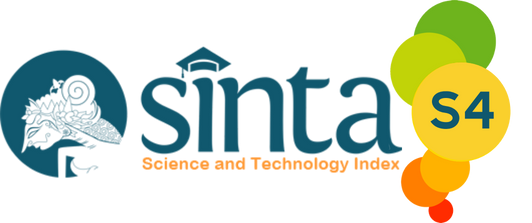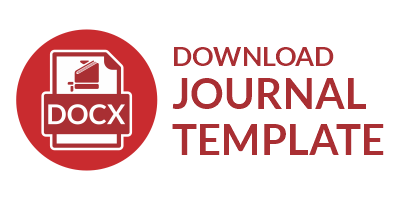Submissions
Submission Preparation Checklist
As part of the submission process, authors are required to check off their submission's compliance with all of the following items, and submissions may be returned to authors that do not adhere to these guidelines.- The submission has not been previously published, nor is it before another journal for consideration (or an explanation has been provided in Comments to the Editor).
- The submission has not been previously published, nor is it before another journal for consideration (or an explanation has been provided in Comments to the Editor).
- The submission file is (docx) in OpenOffice, Microsoft Word, RTF, or WordPerfect document file format.
- Where available, URLs for the references have been provided.
- I understand all the information provided on the Thematic Journal page.
- I am willing to follow all established procedures including (uploading the manuscript and revisions) until the manuscript is published.
Research Article
Artikel yang melaporkan hasil dari penelitian empiris atau studi kasus asli.
Review Article
Artikel yang mensintesis dan mengevaluasi penelitian yang telah ada, mengidentifikasi tren, kesenjangan, atau tantangan dalam suatu topik. Cocok untuk tinjauan literatur sistematis (systematic literature review) atau meta-analysis.
Conceptual Paper
Dikhususkan untuk artikel yang mengemukakan teori, model, atau kerangka kerja baru berdasarkan argumen logis dan literatur yang relevan
Best Practices and Innovations
Bagian ini bisa digunakan untuk artikel yang mendeskripsikan praktik pendidikan inovatif, metode pengajaran baru, atau implementasi program yang sukses, tanpa perlu data penelitian yang mendalam.
Copyright Notice
The author hereby declares that they have read and fully understand the terms of the Creative Commons Attribution-ShareAlike 4.0 International (CC BY-SA 4.0) license, which will be applied to the article to be published in the Jurnal Tematik.
What This Means for Your Article
This license grants the public the freedom to use your article, provided two main conditions are met:
-
Attribution (BY): Anyone who uses or distributes your article must always credit you as the original author.
-
ShareAlike (SA): If anyone creates a derivative work or modifies your article, they are required to publish their modified version under the same license, which is CC BY-SA 4.0.
By agreeing to this license, you are allowing anyone to freely use and even modify your article for educational, research, or commercial purposes, while still honoring your rights as the original author.







